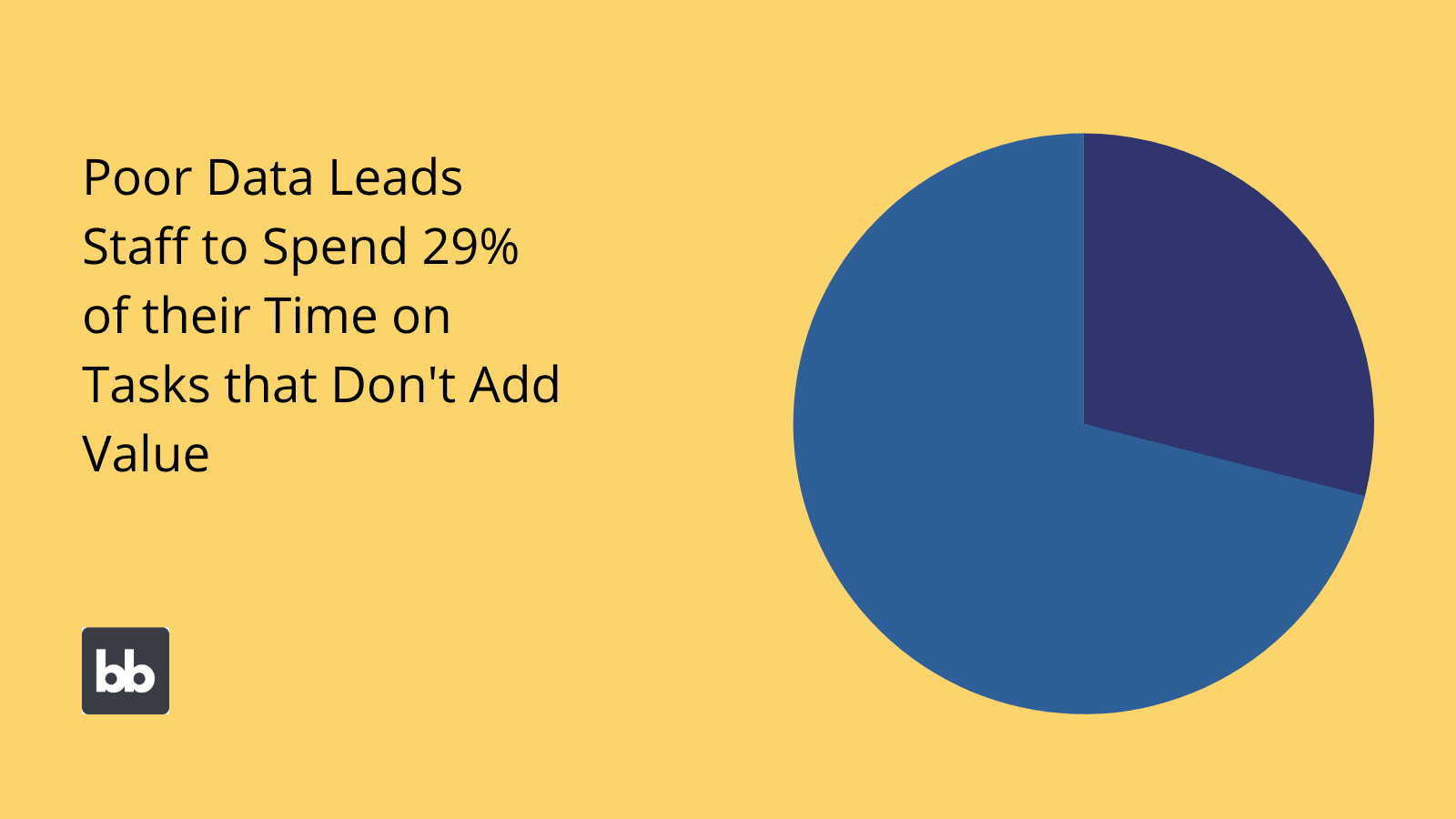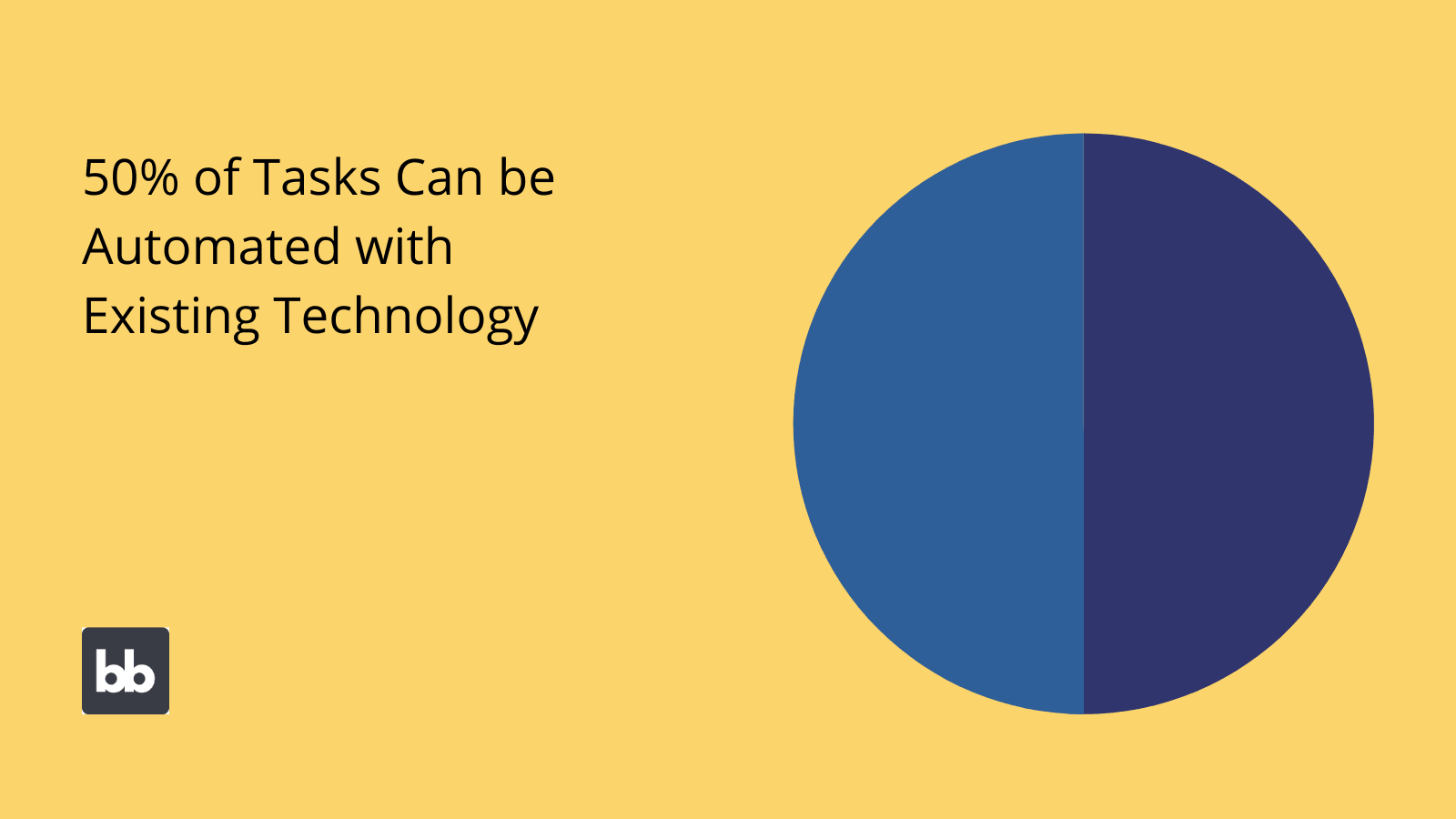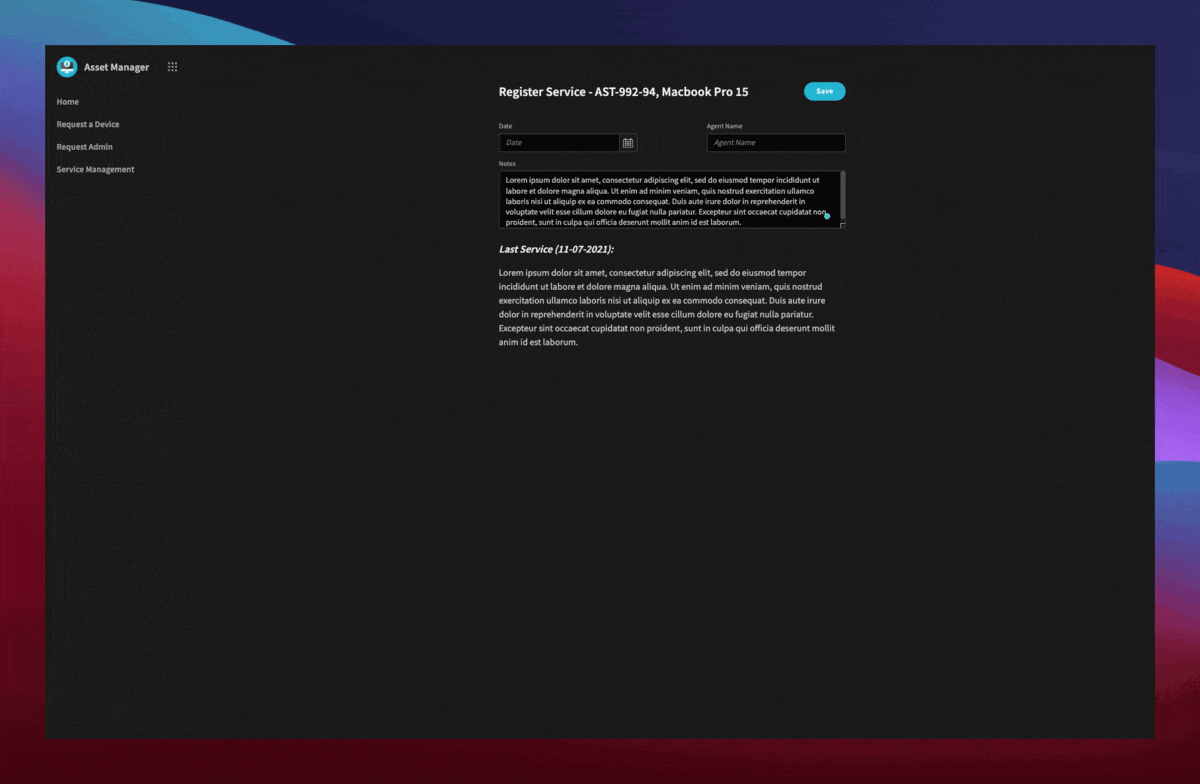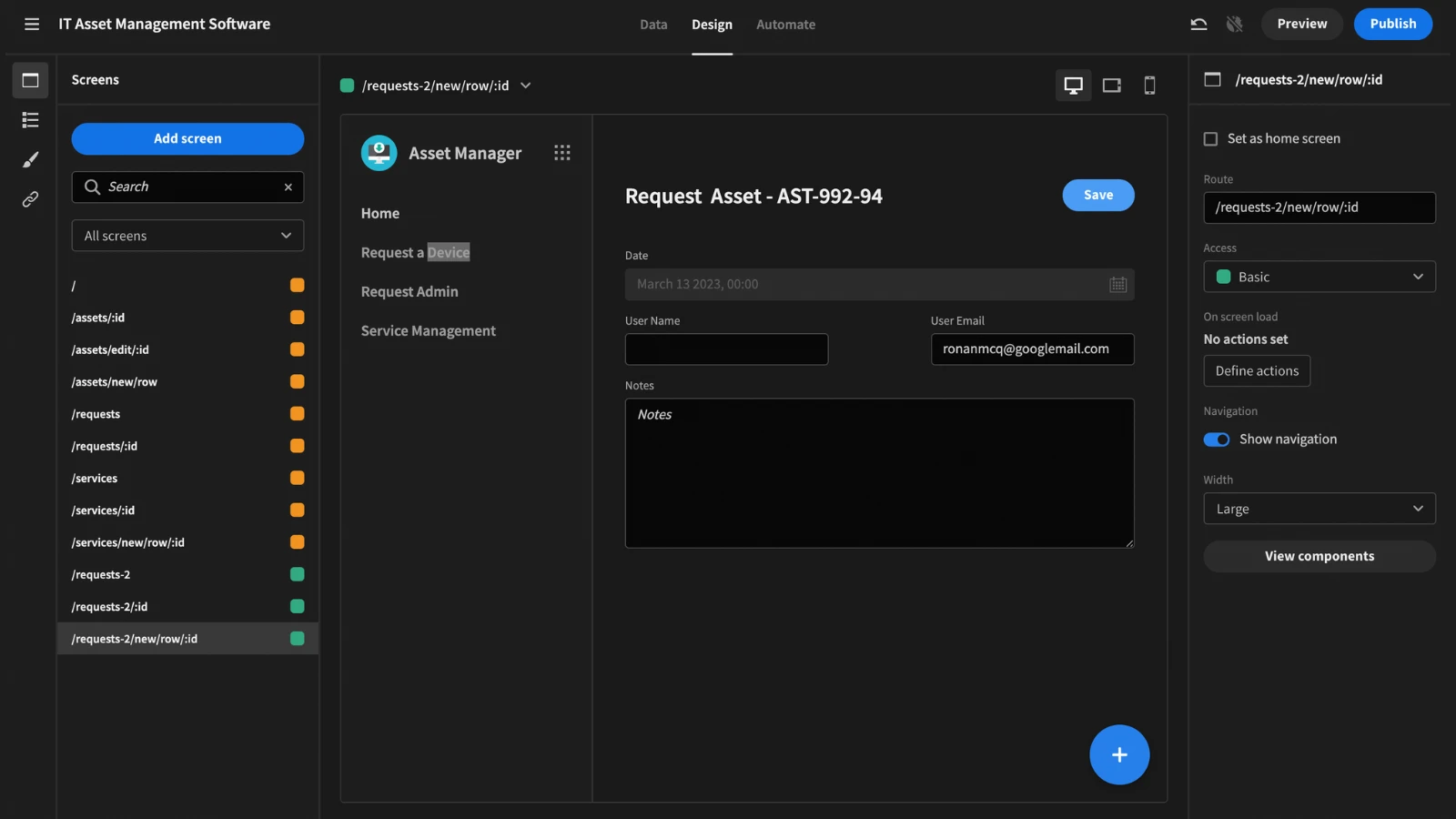How to Streamline Business Processes | 6 Strategies
Companies of all shapes and sizes are in a race to eke out every possible competitive advantage through efficiency savings. A core part of this is knowing how to streamline business processes.
We’re all facing tough economic headwinds, so to keep the lights on, we need to learn to do more with less.
Building robust, effective internal processes is a critical part of this.
Today, we’re exploring everything you need to know to streamline business processes. In fact, we’re going to think about six repeatable, proven strategies that you can use to make your regular ops more efficient.
Along the way, we’ll also check out the specific ways that your team will benefit from streamlined processes, along with how Budibase helps businesses to achieve these goals.
First, though, we need to start with the basics.
What do we mean by streamlining business processes?
Really, there are two parts to this question. So first of all, it’s worth clarifying what we mean by business processes. This is any regularized set of steps that our team carries out in order to meet a defined goal.
This includes the logic that underpins the steps, as well as the tools that are used to enforce them and the way users interact with these on a day-to-day basis. Examples of processes could be anything from expense approvals to new product development.
More importantly, what does it mean to streamline a business process?
We’ve mentioned the idea of efficiency already - and while this is a big part of what we’re talking about, it isn’t the whole story.
So, for instance, we could mean efficiency in terms of the costs of carrying out the process. Or, we could mean the turnaround time or the number of manual actions required.
Besides just efficiency, streamlining business processes can also mean setting out to improve related measures, like reducing human error, improving accuracy, boosting visibility, or adding accountability measures within our daily operations.
Of course, your particular goals here might be quite different from your competitors.
To think more deeply about how this works, we can take a step back and think more specifically about why we set out to streamline business processes.
Benefits of streamlining processes
To that end, we need to spell out the core business goals we might set for our process change efforts.
Indeed, before we move on to thinking about the specific strategies we can leverage to streamline business processes, it’s critical to understand the various outcomes we might be hoping to achieve.
Let’s take a look at the primary areas we might want to focus on improving.
Here we go.
Cost reduction
The first - and most fundamental reason to streamline business processes is cutting costs. That is, we want to reduce the outlay required to achieve a particular outcome - no matter what this is.
Of course, since a business process can be so many things - there’s also a wide range of different kinds of costs that you might incur. Labor hours are the most obvious and really universal place where costs can rack up.
However, when we streamline business processes, we can rationalize the way that we use any kind of business resources - whether this is raw materials, digital assets, equipment, or any other tools your team needs to get their daily work done.
Streamlining our processes serves the dual goals of reducing and regularizing costs.
That way, we can more effectively resource tasks that actually provide value.

(McKinsey )
Agility
Agility is our ability to respond quickly to change. With regard to process improvement, we can think about agility at two distinct levels. First, there’s how quickly we can complete processes in situ.
For example, streamlining can mean removing redundant or extraneous steps, helping us to meet our goals more quickly. Or, by regularizing repeated tasks, we can more easily add colleagues to specific processes to respond to changing demands.
On the other hand, when we effectively streamline business processes, we also put ourselves in a stronger position to alter them when we need to. There are two reasons for this. First, we’ll have more resources available to do so.
Second, if our processes already follow the minimum viable structure, we can be much more targeted and deliberate about any aspects of them that we must add, remove, or otherwise alter.
Regularity and accuracy
Regularity is all about achieving the same results no matter which colleagues are involved in our actioning different steps within our business processes. In other words, this is a function of how effectively we’re able to enforce the underlying rules and logic.
Related to this, accuracy is the degree to which we’re able to limit variance within our processes due to human inputs or discretion.
The net effect of improving both is that we can more effectively ensure consistency in the outcomes of our processes - no matter what inputs or employees are involved.
We’ll return to some of the specific strategies we can turn to to achieve this a little bit later.
Security and risk management
Streamlined, regular business processes are essential for managing risks, ensuring compliance, and maintaining security across our internal operations.
One huge element of this is restricting the actions that colleagues can take to reduce the risks of human error and nefarious activity.
Regularization also helps us to improve oversight and auditability within our processes. In other words, when we have tightly defined actions that users are supposed to follow to complete a given task, it’s much easier to identify areas where they’re gone off-piste.
Similarly, one of the key strategies we can leverage to streamline business processes is minimizing the human interactions required to complete tasks, further reducing the potential for human error and deliberate security breaches alike.
Scalability
Finally, streamlining processes has a direct impact on our ability to scale workloads. Again, we can point to a few distinct but interrelated issues here.
For commercial tasks, when we reduce the overheads that are required, we can increase the volume of work our team is able to complete for the same cost.
There’s also the issue of training and onboarding colleagues to work on affected processes. When the required actions are as efficient and intuitive as possible, it’s much easier to get colleagues up to speed.
Therefore, we can much more readily add resources to the processes in question in response to changing needs.
How to streamline business processes: 6 strategies
So, we know why we would want to streamline business processes. The next step is exploring some of the concrete strategies that we might turn to in order to achieve this in the real world.
This is a pretty exciting topic because we have an enormous range of technical, operational, cultural, and governance levers that we can draw upon.
Indeed, streamlining business processes is at the nexus of creative, empirical, and technological skill sets.
With that in mind, here are six proven strategies that you can use to reduce costs and improve outcomes within your regular tasks.
1. Automation
Automation is the driving force behind modern, efficient businesses the world over. In fact, nowadays automation is less a way to gain a competitive advantage than it is simply the name of the game.
Removing unnecessary manual actions is basically non-optional.
So, at a practical level, what can your business do to alleviate the burden of repetitive tasks for your employees?
For SMEs, there’s a big misconception that automation is beyond their reach - either financially or in terms of technical capabilities.
The reality is that automation comprises a wide range of technologies - from advanced machine learning-based solutions to relatively simple sets of trigger/action pairs.
Indeed, most business processes are built using existing platforms and technology, so the relative front-loaded investment required is lower than you might think.

(McKinsey )
We’ll check out how Budibase can be used to streamline business processes with rule-based automation a little bit later.
2. Digitalizing approval flows
A huge number of business processes can actually be expressed as request/approval flows. Essentially, this is any task that involves one group of employees making a request for a particular resource or action and another group responding based on defined rules.
For instance, vacation requests, invoice approvals, project initiations, internal audits, and more.
The important thing here is that because these kinds of tasks are so heavily tied to fixed logic, they’re prime candidates for digitalization.
We can leverage a number of core strategies to achieve this. Automation plays a role of course, but this isn’t the only weapon in our arsenal. Another core strategy is shipping bespoke tools to manage simple approval processes.
This serves the simultaneous goals of ensuring compliance with internal rules and minimizing the process’ resource incursion.
Let’s think about an example.
Say we had a simple approval process for employees to request assets from the IT team. This has the potential to create a lot of admin work for our technical colleagues - even though they frankly have better things to do.
Digitalization provides a clear route through this. For example, we can automate simple decisions, notify competent employees when a case needs their attention, and provide easy access to information about where specific assets are deployed at any given time.

3. Rationalizing internal roles
How roles and responsibilities are delegated within your processes has a tangible impact on their efficiency. The easiest way to illustrate this is by considering what happens when it’s unclear who is responsible for what within a particular task.
So, if we have loosely defined roles, we’re more likely to find ourselves in a situation where employees will act on their own discretion, outside of defined business logic. This leads to poor process adherence.
The first step to overcoming this is defining effective roles based on the tasks that user groups are authorized to perform within a process.
When we digitalize the process in question, these inform the screens and functions that each user can access, along with the appropriate data exposure. We can even use conditional UIs to ensure users can only access individual components that are appropriate for their role.
We’ll return to how Budibase treats role-based access control a little bit later.
4. Streamlining access to information
Before we set out to streamline individual processes, we can also take a step back and think about how users access, share, and collaborate on data within our organization more generally.
Many businesses talk a big talk about being data-driven but few actually embed this as a cultural norm within their organization.
So what practical steps can we leverage to streamline access to information? In the first instance, the key is effectively documenting and centralizing business data - potentially with data lakes, data warehousing, or just effective data management solutions.
With this in place, we also need to consider our governance needs. That is, implementing appropriate controls over who can access specific data assets, as well as when and how.
Then, we can figure out the most appropriate strategies for implementing these rules in a medium that’s appropriate for the end user. For example, furnishing departmental leaders with accessible real-time dashboards relating to key metrics within their team.
5. No/low-code development
Over the past decade, no/low-code development has become a cornerstone of how companies streamline business processes. A huge proportion of process improvement efforts involve some requirement to ship custom tools.
But, in the majority of cases, the required solutions aren’t especially complex - at least from a technical point of view. This gives rise to a situation where internal IT teams are under increasing pressure to carry out high volumes of relatively simple development work.
In turn, we see digitalization projects shelved because of development backlogs.

(McKinsey )
Low-code development platforms offer a clear solution, by empowering busy IT teams to output effective solutions at pace, without the need to code everything from scratch.
This enables your existing development talent to solve common use cases more quickly, as well as lowering the barriers for non-developers to build solutions of their own.
We’ll see how Budibase is leading the charge toward the end of our discussion today.
6. Integrating existing platforms
Finally, the majority of businesses can make enormous strides toward streamlining processes by simply making better use of the platforms they already have in place.
Nowadays, employees interact with a greater number of highly-specific internal tools and SaaS platforms than ever before. We can reap huge efficiency dividends when we make these tools interact more effectively with one another.
The key is integration.
See, when we rely on disparate tools for granular functions, we risk creating hidden admin work maintain consistency across the data that each one deals with.
With automated data pipelines, proprietary integration tools, and dedicated solutions like Zapier, we have huge scope to streamline processes that operate across platforms, reducing administrative workloads, and more - limiting users’ exposure to data simultaneously.
Check out our ultimate guide to internal processes to learn more.

Build sleek, performant apps with Budibase
Today, IT teams face a higher demand than ever for custom business tools. The need for digital transformation isn’t going to slow down any time soon, placing a huge burden on internal developers to create and maintain solutions.
Budibase is the answer - offering a fast, easy way to build secure, performant web apps.
Our open-source, low-code platform
Budibase offers simplicity by default, with extensibility when you need it. Our open-source, low-code platform makes it a breeze to build your data layer, design interfaces, automate logic, and ship your tools how and where you want.
Check out our features overview to learn more.
External data support
We lead the pack for external data support. Budibase offers dedicated connector UIs for SQL, Postgres, Airtable, Mongo, Couch, Arango, REST, S3, Oracle, Google Sheets, and many more.
We also provide our own built-in database with simple relational tables, formula variables, and full CSV upload support.
Optional self-hosting
Security-first business love Budibase for the power to deploy their low-code tools to their own infrastructure. Self-host your Budibase apps using Kubernetes, Docker, Docker Compose, Digital Ocean, and more.
Or, use Budibase Cloud to get up and running at the press of a button. Check out our pricing page to learn more about both options.
Configurable RBAC
Budibase features powerful but easy-to-manage role-based access control. Use simple dropdowns to assign roles to users and grant or restrict access at the level of data sources, queries, screens, or even individual components.
It’s never been easier to maximize usability without compromising on security.
Custom plug-ins
Budibase is the clear market leader for customization and extensibility. With our custom plug-ins, you can build your own components and data sources to use across all of your app builds.
Check out our plug-ins documentation to learn more.
Streamlined automations
Use our dedicated automation builder to effectively digitalize business logic, with minimal custom code. Our step-based editor makes it a breeze to combine, configure, nest, and test a whole range of built-in triggers and actions.
You can even leverage external events within your automations, connecting to third-party apps using Zapier, WebHooks, Rest API, and more.
50+ free application templates
Organizations all over the world choose Budibase to streamline business processes, across just about every imaginable vertical, use case, and pain point. It’s fair to say, we have a lot of confidence in what our platform can do.
That’s why we decided it only makes sense to show you - by building over fifty free, deployable, and fully customizable app templates .
To start building custom solutions for your internal processes the fast, easy way, sign up to Budibase for free today.